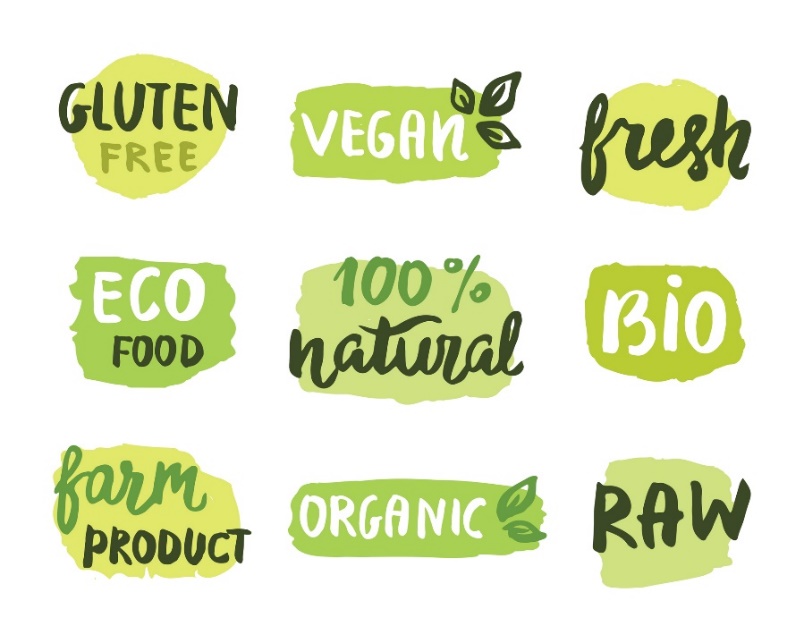- is.muni.cz - Orthorexia and selected sport activities. Vašíček Michal, Mgr. Katarína Šimková. Masaryk University. Bachelor thesis)
- is.muni.cz - Nervous orthorexia. Eva Paulíčková, doc. PhDr. Mojmír Tyrlík, Ph.D. Masaryk University. Master's thesis
- webmd.com - Orthorexia. Medically reviewed by Brunilda Nazario, MD
- healthline.com - Orthorexia: When healthy eating becomes a disorder. Healthline Alina Petre, MS, RD (NL), Healthline
Orthorexia: what eating disorder is it? Symptoms, diagnosis + TEST

Orthorexia is a modern eating disorder based on the exclusive intake of organic foods and dependence on healthy foods. How does this disorder arise and what are its symptoms? Can orthorexia be treated?
Characteristics
The word "ortho" means proper and "orexis" means taste. Nervosa refers to an obsession.
It is therefore primarily an obsession and fixation on healthy and proper eating.
Dr. Bratman observed this mental illness in himself when he had been feeling good about healthy eating for a long time. However, he later realized his obsession with preparing and eating healthy food.
Over time, he noticed how his mind was not preoccupied with anything other than diet. On the contrary, he felt remorse if he consumed "inappropriate" food.
A person suffering from orthorexia compulsively avoids foods that are genetically modified, too sweet, salty or spicy, contain preservatives, allergens, pesticides, artificial colours or various flavourings.
He also often avoids dairy, animal products and foods with a higher fat content.
Orthoretics especially seek out raw organic foods without gluten and sugar.
Experts divide orthorexia into 2 basic groups.
The first group are orthorexics who show signs of obsession due to certain beliefs or intolerances but do not experience a state of malnutrition.
On the other hand, the second group of orthorexics is closer to anorexia. They limit their intake of healthy foods to a minimum and consequently the body becomes malnourished.

The difference between anorexia and orthorexia
Compared to eating disorders such as anorexia or bulimia, orthorexia is a new disease. The main difference, however, is the primary idea. But beware! The presence of one eating disorder makes it more likely that you will develop a second eating disorder.
The anorexic focuses on the amount of food and malnutrition occurs.
An orthorexic focuses primarily on the quality of food and, due to limited options, secondary malnutrition may occur.
Recently, a number of mental disorders related to nutrition and appearance have emerged, such as drunkorexia or bigorexia.
Causes
Gender, age, mental and physical state, occupation and risk group play a role.
The most vulnerable group to succumb to this mental disorder is the female sex, people with food allergies and intolerances.
The risk group includes professions such as: sports, modelling, acting, dietetics, nutritional therapy and similar health, diet and appearance related professions.
Symptoms
When following a diet, the orthorexic person is filled with pride, and conversely, when "misbehaving", they become damned.
Gradually, the orthorexic person thinks only about food, and dieting absorbs the other psychosocial aspects of his life. He builds his own identity and self-esteem on eating right.
The orthorexic individual is able to spend countless hours a day thinking about food, shopping, studying ingredients, carefully preparing food and then eating it.
Another possible manifestation of orthorexia is the individual's disinterest in going to restaurants and social gatherings to eat foods other than those he or she prepares.
There is a fear of eating food that contains additives or has undergone some 'unsuitable' processing.
The most common symptoms of orthorexia are:
- Obsession with healthy food
- Seeking out 'clean' foods
- Concerns about the quality and composition of food
- Food values take precedence over taste
- Fear of eating food that he or she does not prepare himself or herself
- Remorse for violating a healthy diet
- Skipping favourite foods because of ingredients
- Planning menus several days in advance
Diagnostics
However, there are currently no classified diagnostic criteria for orthorexia.
Dr. Bratman's diagnostic test for orthorexia
TheBratman self-test for the diagnosis of orthorexia was developed by Dr. Steven Bratman. It is a self-test consisting of simple yes and no multiple choice questions.
The more yes answers, the higher the likelihood of an orthorexia disorder.
Another frequently used diagnostic test is the ORTO-15 test, developed by Italian researchers, which contains 15 questions. As with Bratman's test, the more frequent the yes answer, the closer the occurrence of orthorexia.
Short test. Answer the following questions:
- Do you think about eating healthy for more than 3 hours a day?
- Do you plan your diet several days in advance?
- Are you getting stricter with yourself in your questions and criteria regarding food?
- Are you overwhelmed by feelings of guilt or loss of self-esteem when you eat something "unhealthy"?
- Do you feel satisfaction from eating in a way that you consider healthy?
- Has your self-esteem increased as a result of eating healthily?
- Do you prefer the nutritional value over the actual taste of the food?
- Have you eliminated favorite foods from your diet that were not healthy enough?
- Has the quality of your personal life decreased at the expense of increasing the quality of your food?
- Does the way you eat limit your social activity - socialising with family or friends?
Risks and consequences of orthorexia
The risks of long-term orthorexia are both physical and psychological. Malnutrition can easily occur in the context of advanced orthorexia. Malnutrition is a condition where the body does not get enough of necessary substances such as vitamins or minerals.
Without the necessary nutrients and building blocks, the body can become weaker, and the immune system and defenses may deteriorate. It may become more susceptible to disease or physical fitness and performance may decrease.
Interesting information in the article:
Essential nutrients in the human diet: what are proteins, sugars, fats?
People with orthorexia are often subjected to prolonged daily stress and fear of breaking a set eating habit. A fear of eating "unclean" foods may develop.
Chronic stress is subsequently a risk factor and trigger for many diseases of the human body.
How it is treated: Ortorexia
Treatment of orthorexia: medication? No. A psychiatrist and a nutritionist can help
Show moreOrtorexii is treated by
Other names
Interesting resources










